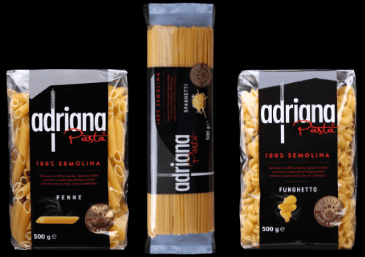
LOWER GLYCEMIC INDEX
Adriana semolina pasta is stronger in texture and therefore does not overcook. Pasta cooked al dente has a lower glycemic index.
The glycemic index is a bare quantity that indicates the rate at which the body uses glucose from a particular food. The higher the glycemic index value of a food, the more our blood sugar level rises after we eat the food, and the worse it is for weight loss.
The glycemic index reflects the rise in blood sugar when a particular food is digested. When blood sugar spikes, the hormone insulin “catches” it in a flash and stores it where it is needed (and the excess goes where we don’t really want it, to fat stores). As a result, blood glucose levels drop quickly and we feel hungry again or get the munchies. This is what happens when we eat overcooked pasta. Their glycemic index is around 60, in the middle range. It is an easy job for our digestive system, so it is a quick process.

LONG-TERM ENERGY SUPPLY
Because of the stronger texture, Adriana pasta has a low glycemic index (between 40 and 50 points). In semolina, the index is further reduced by the higher protein and fibre content. Blood sugar levels do not fluctuate as much. It takes a while for our metabolism to process it, which is a good thing. It is more beneficial for the body. We get continuous energy from it, it lasts longer and we don’t get hungry again so quickly.

VITAMINS
Adriana semolina pasta contains a higher amount of certain vitamins than pasta made from soft flour. In the case of vitamins B1, B2 and folic acid, a standard portion contains up to 30% of the recommended daily intake. It also contains magnesium, iron and fibre in amounts that equal about 10% of the recommended daily intake.

GREAT FOR KIDS AND ATHLETES
Adriana semolina pasta contains complex carbohydrates that provide the body with an easy-to-use energy supply. It is ideal for children, athletes and anyone with an active life. For a balanced diet, always add a portion of vegetables and a portion of protein to the pasta.







